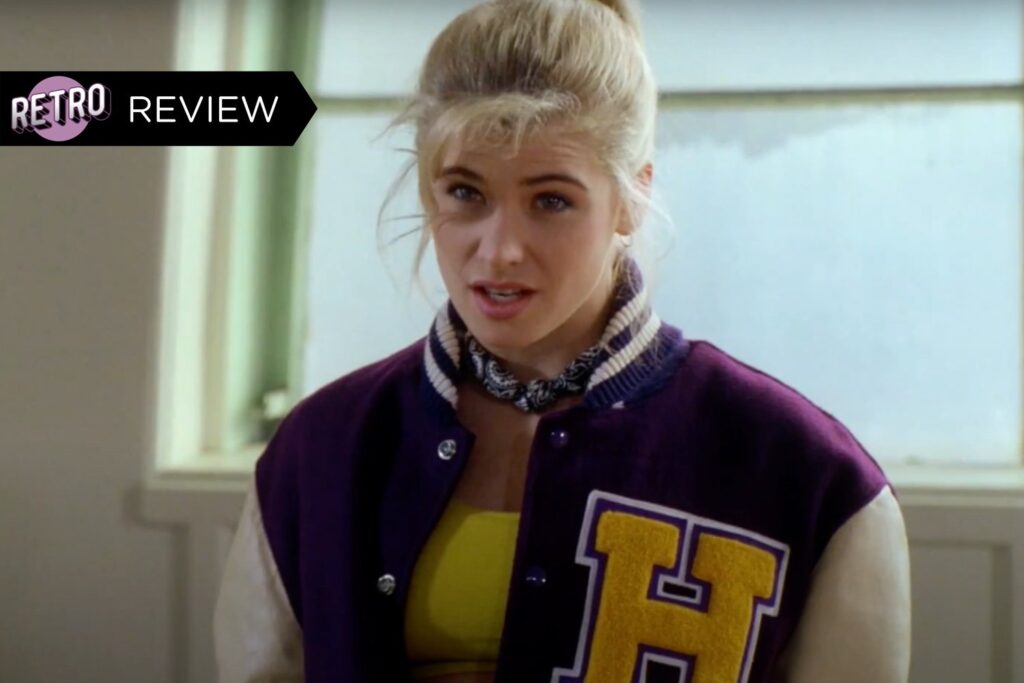Buffy the Vampire Slayer may soon make a TV comeback with Sarah Michelle Gellar—and the cult-classic series will always be the most beloved version of Buffy’s story. But in 1992, five years prior to fans becoming obsessed with Sunnydale and the Scoobies, a different version of Buffy’s story hit the big screen. The same broad strokes are there; the script is by (now-disgraced) Buffy series creator Joss Whedon, and it follows a chipper blonde named Buffy saving the world from monsters. But it’s got a flavor all its own, and it remains both a time capsule of 1990s teen culture as well as a surprisingly timeless story.
You already know from the perfectly descriptive title, but Buffy the Vampire Slayer has more than a few elements of satire stuffed into its storytelling. It opens with a preface set during “Europe: The Dark Ages” that establishes the mythology we’ll be working with here: throughout history, watchers train slayers uniquely equipped to battle the blood-sucking forces of evil—until the slayer dies, and the next is chosen, and the process starts anew. A close-up of the slayer’s wooden stake cuts to a shot of a cheerleader shaking her pom-poms at a high-school basketball game, and Buffy the Vampire Slayer is off. We probably don’t need it, but it’s amusing anyway to be informed that this is “Southern California: The Lite Ages.”
Whedon may have penned the screenplay, but Buffy was directed by Fran Rubel Kuzui, and it’s not hard to imagine that having a woman behind the camera helped inform the movie’s approach to its central character, as well as her friend group. When we first meet them, the girls (Kristy Swanson as Buffy; Michele Abrams as Jennifer; Paris Vaughan as Nicki; and a pre-fame Hilary Swank as Kimberly) come across as superficial airheads, shopping together at the mall and using slang that still fits even a decade after Valley Girl, a movie that Buffy tips its hat to in multiple ways.
But we soon see there’s a ruthless competitiveness lurking just below the surface; their interactions are often catty to the point of being mean-spirited, and you can sense early on there’s not much loyalty in this little tribe. That theme becomes even more overt when Buffy meets Merrick (Donald Sutherland), the watcher to her slayer—a man who couldn’t be more out of place in the Lite Ages, and who squelches his very reasonable doubts about Buffy being capable of fulfilling her destiny and devotes himself to helping her succeed.

Merrick has no choice but to stay on his mission—it’s his destiny too, a fact we learn in a heartbreaking speech that makes you glad Sutherland signed on for this one and brought all his gravitas along—and Buffy soon warms to his strange man. The fact that her friends are toxic, her boyfriend is a giant jock stereotype, and her parents couldn’t be more checked-out (“Stay away from the jag” is how her dad bids farewell when they scamper off on their latest getaway), means that she’s secretly grateful someone is taking her seriously for once.
Buffy’s self-actualization expands when she meets Pike (Luke Perry, delightfully cast against type as a burnout at the height of his hunky Beverly Hills, 90210 fame), who puts aside his own mixed feelings about Buffy once he gets to know her. (That he witnesses her incredible vampire-staking reflexes only increases his admiration.) In turn, Buffy puts aside her own initial judgment of Pike as a grimy loser, and realizes how refreshing it is to be noticed for more than just her good looks. You want this odd couple—the popular cheerleader and the weirdo—to get together, but the movie doesn’t rush into getting there. Their relationship does cement itself after subverting two high-school movie tropes, however: a makeover sequence (his), and a high-school dance (hers, overrun by a plague of hungry fang-bangers).
And speaking of vampires, Buffy the Vampire Slayer‘s most campy delights come with Rutger Hauer as big bad Lothos, and Paul Reubens (post-Pee-wee’s Playhouse, and just post his tabloid-sensation arrest) as his oily underling. The biggest problem Buffy has are the plot holes surrounding its confusing and underbaked lore—Lothos meets the slayer and it’s no big deal, but it’s game over if he learns her name? Why doesn’t he just kill her on his first opportunity rather than holding back because “she is not ready”?—but if you don’t think about it too much, it’s easy enough to put those aside and simply enjoy the performances.

Though Buffy the Vampire Slayer is very much a product of 1992—the fashions, the music, the lack of cell phones—it’s a story that could fit into nearly any decade. The TV show, which ran from 1997-2003 and is poised for a comeback over 20 years later, made that clear, but these are evergreen themes: an unlikely hero who rises from an even more unlikely place, a supernatural threat that only this chosen one can vanquish. A mismatched romance that works in spite of itself. A mentor and a student drawing strength and knowledge from each other.
While Swanson’s political views have become more notable than her acting roles lately, and Perry, Reubens, Hauer, and Sutherland have all passed on, the main factor that makes Buffy feel dated are the faces you see pop up in the smaller parts: Hilary Swank, already mentioned, laying down perfect bimbo insults (“Get out of my facial!”) years before her Oscar wins. David Arquette (pre-Scream) is Pike’s buddy, Benny, who has a funny scene in which he emerges from a photo booth and all the pictures show up blank… because he’s a vampire. Thomas Jane (The Expanse) is credited as “Tom Janes” in a bit part as Pike’s mechanic friend. Stephen Root (pre-News Radio and Office Space) flexes his awkward-guy persona as Buffy’s school principal. There are also cameos (or blink-and-you’ll-miss-them appearances) by Ben Affleck, Ricki Lake, Seth Green, Alexis Arquette, and probably more, frankly.
Plus, Buffy is still funny as hell—the lines are zippy, as much as it makes a person cringe to hat-tip Whedon, and the physical comedy is still there too. Reubens’ endless death scene is one for the ages, and surely nobody realized in 1992 how ruefully humorous that “young Republicans” joke that comes during the film’s end-credits reel would hit all the way in 2025.

Buffy the Vampire Slayer is streaming on Prime Video. You can also stream the Buffy the Vampire Slayer series on Disney+.
Want more io9 news? Check out when to expect the latest Marvel, Star Wars, and Star Trek releases, what’s next for the DC Universe on film and TV, and everything you need to know about the future of Doctor Who.







